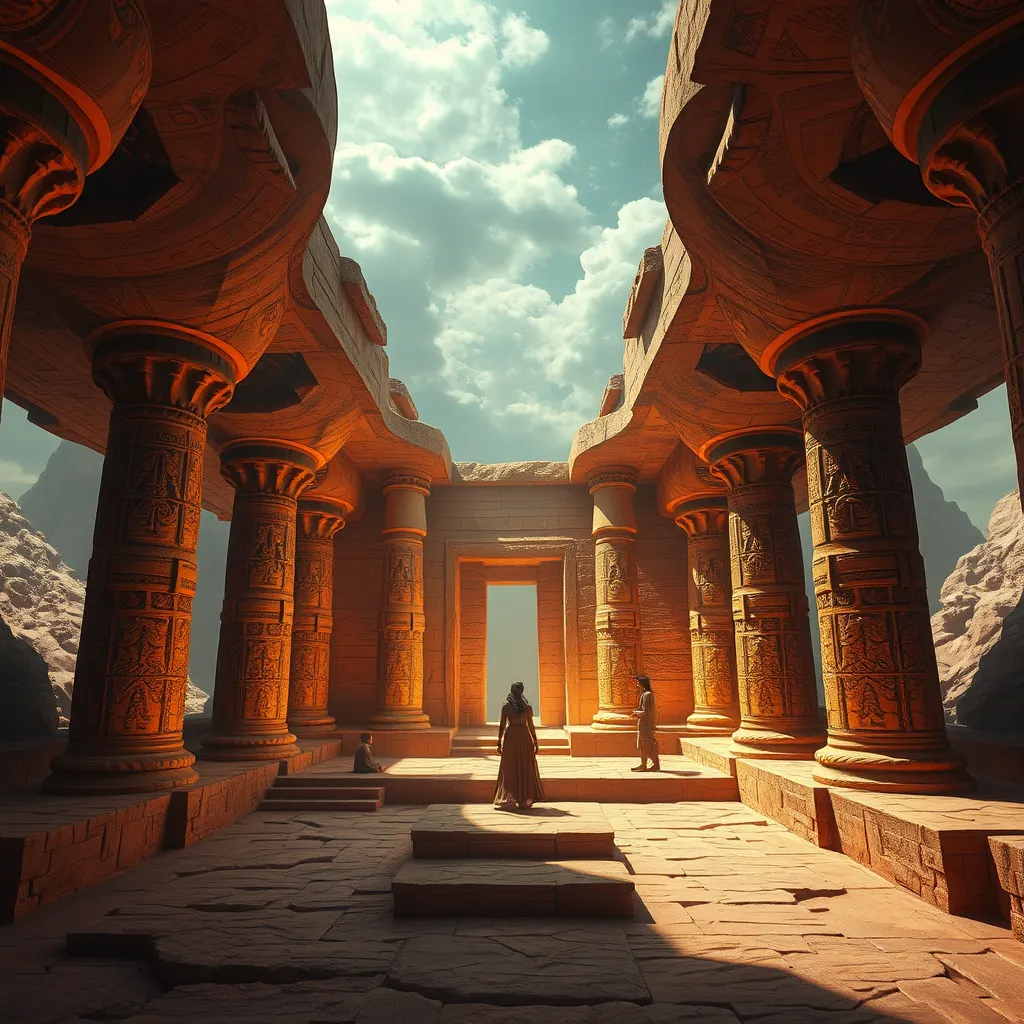The Duat: A Place of Healing and Reconciliation
I. Introduction
The Duat, a significant concept in ancient Egyptian mythology, represents the realm of the dead and serves as a crucial stage in the afterlife journey. This mystical place is not merely a location but a complex, multifaceted space where souls undergo healing and reconciliation following their earthly existence. Understanding the importance of healing and reconciliation in the afterlife is essential in appreciating the broader implications of the Duat within Egyptian culture.
The purpose of this article is to explore the various dimensions of the Duat, emphasizing its role as a place of healing and reconciliation for the souls that traverse its depths.
II. The Concept of the Duat
The Duat is defined as the Egyptian realm of the dead, where the souls of the deceased journey after death. It holds immense significance in Egyptian belief systems, symbolizing not only a place of judgment but also a space for healing and transformation.
Described in various ancient texts, the Duat is often depicted as a dark and mysterious realm filled with challenges and obstacles. However, it is also a place where the soul can find respite and forgiveness. The journey through the Duat is a complex process that involves navigating various trials and meeting key deities who assist in the transformation of the soul.
III. The Role of the Duat in the Afterlife Journey
The journey through the Duat is of paramount importance in the afterlife narrative. It signifies the soul’s transition from the physical world to the afterlife, marked by various stages of trial and reflection.
- Key Deities: Important figures such as Osiris, the god of the afterlife, and Anubis, the god of mummification and the protector of graves, play pivotal roles in guiding souls through the Duat.
- Trials and Tribulations: Souls must confront challenges, including the weighing of the heart against the feather of Ma’at, representing truth and justice.
IV. Healing Rituals and Practices in the Duat
Healing rituals associated with the deceased were integral to the journey through the Duat. These practices aimed to ensure that the soul could achieve peace and reconciliation with its past.
- Rituals: Families performed rituals to honor their deceased, including offerings and prayers intended to aid the soul’s passage through the Duat.
- Symbols of Healing: Various symbols, such as the ankh (the symbol of life) and the scarab (representing regeneration), were believed to facilitate healing.
- Book of the Dead: This ancient text served as a guide for the deceased, containing spells and instructions to help navigate the challenges of the Duat.
V. Reconciliation with the Past
Central to the experience in the Duat is the concept of Ma’at, which embodies truth, balance, and order. This principle is crucial as souls confront their past actions.
- Confrontation of Deeds: The process of reconciling one’s deeds involves a thorough examination of both good and bad actions performed during life.
- Importance of Forgiveness: Forgiveness, both of oneself and of others, is a vital aspect of the healing process in the Duat, enabling the soul to move forward.
VI. The Duat and Personal Transformation
The Duat serves as a space for profound personal transformation, allowing souls to evolve beyond their earthly limitations.
- Transformative Power: Experiences within the Duat can lead to enlightenment and a deeper understanding of one’s place in the universe.
- Personal Growth: The trials faced in the Duat foster resilience and personal growth, encouraging souls to learn from their experiences.
- Mythological Case Studies: Stories from mythology illustrate how characters like Osiris and Isis underwent transformation through their journeys in the Duat.
VII. Modern Interpretations of the Duat
The concept of the Duat continues to influence contemporary spiritual beliefs, with many finding inspiration in its teachings on healing and reconciliation.
- Influence on Spiritual Practices: Modern healing practices often draw from ancient Egyptian traditions, utilizing rituals and symbols that echo the healing aspects of the Duat.
- Reconciliation Themes in Literature: The motifs of healing and reconciliation found in the Duat resonate in modern literature and art, reflecting humanity’s ongoing quest for understanding life and death.
VIII. Conclusion
In conclusion, the Duat stands out as a vital aspect of ancient Egyptian mythology, embodying the themes of healing and reconciliation. Its significance as a place where souls confront their past and undergo transformation is a testament to the enduring legacy of these beliefs in understanding the complexities of life and death.
Reflecting on the teachings of the Duat can inspire us to seek healing and reconciliation in our own lives, reminding us of the importance of confronting our past and embracing personal growth. In a world often fraught with conflict and misunderstanding, the lessons of the Duat remain relevant, encouraging us to foster forgiveness and balance within ourselves and our relationships.




